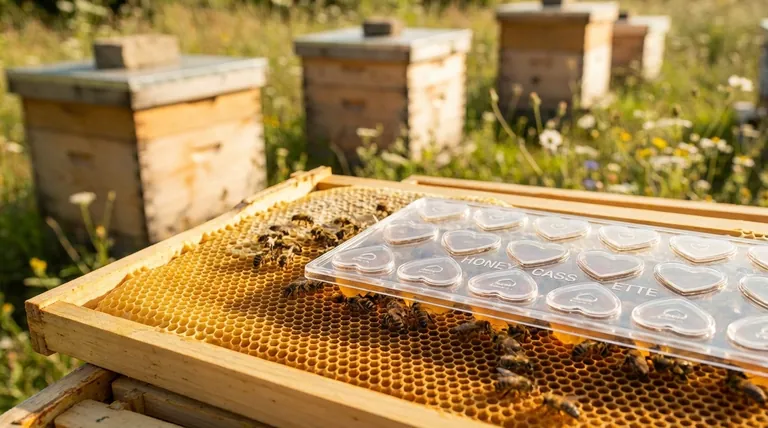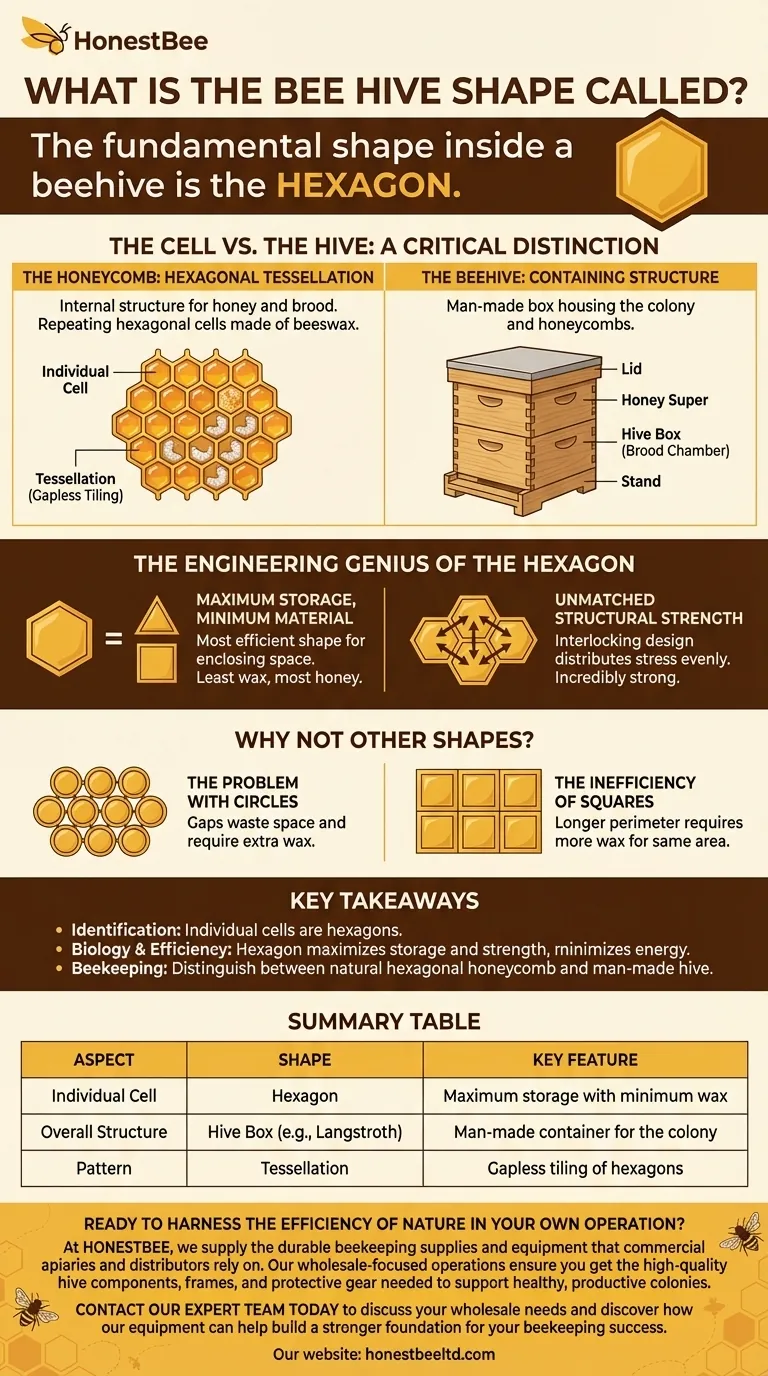The fundamental shape inside a beehive is the hexagon. All the individual cells that make up a honeycomb are six-sided polygons, a shape chosen by bees not by chance, but for its remarkable efficiency and strength.
While individual honeycomb cells are perfect hexagons, the term "beehive" often refers to the entire man-made structure that houses the colony. The true marvel is the hexagonal pattern itself, which represents nature's solution for maximum storage with minimum material.

The Cell vs. The Hive: A Critical Distinction
A common point of confusion is the difference between the honeycomb cell shape and the overall hive structure. Understanding both is key.
The Honeycomb: A Hexagonal Tessellation
The internal structure of the hive, where bees store honey and raise their young, is called a honeycomb. This structure is a mass of repeating hexagonal cells made of beeswax. This perfect, gapless tiling of a flat surface is known as a tessellation.
The Beehive: The Containing Structure
When most people say "beehive," they are often picturing the man-made box a beekeeper uses. These hives are comprised of many components, such as the hive box (brood chamber), honey supers, a lid, and a stand. These structures are designed to house the colony and its natural hexagonal honeycombs.
The Engineering Genius of the Hexagon
Bees have used the hexagon for millions of years for several critical reasons that mathematicians and engineers have long admired.
Maximum Storage, Minimum Material
The hexagon is the most efficient shape for enclosing space. For a given area, a hexagon has the smallest perimeter compared to other shapes that can tile a surface without gaps, like triangles or squares. This means bees use the least amount of wax to build a cell that holds the most honey.
Unmatched Structural Strength
When hexagons are packed together, each wall is shared by two separate cells. This interlocking design distributes weight and stress evenly across the entire structure, making the honeycomb incredibly strong and durable relative to its weight.
Why Not Other Shapes?
To appreciate the hexagon, it's useful to consider the alternatives.
The Problem with Circles
Circles are the most efficient shape for a single cell (best area-to-perimeter ratio), but they don't tile a surface without leaving gaps. Filling these gaps would require extra wax and waste valuable space within the hive.
The Inefficiency of Squares
Squares can tile a surface without gaps, but they require a longer perimeter to hold the same area as a hexagon. This would force bees to produce more wax, consuming more energy and resources for the same amount of storage.
Key Takeaways for Your Understanding
Your specific interest determines what aspect of the beehive's shape is most important.
- If your primary focus is simple identification: The shape used for individual cells in a honeycomb is a hexagon.
- If your primary focus is biology and efficiency: The hexagon is nature's perfect solution for maximizing storage and strength while minimizing the energy needed for construction.
- If your primary focus is beekeeping: It's crucial to distinguish between the natural hexagonal honeycomb and the man-made hive structure that contains it.
The hexagonal design of the honeycomb is a masterclass in natural engineering.
Summary Table:
| Aspect | Shape | Key Feature |
|---|---|---|
| Individual Cell | Hexagon | Maximum storage with minimum wax |
| Overall Structure | Hive Box (e.g., Langstroth) | Man-made container for the colony |
| Pattern | Tessellation | Gapless tiling of hexagons |
Ready to harness the efficiency of nature in your own operation?
At HONESTBEE, we supply the durable beekeeping supplies and equipment that commercial apiaries and distributors rely on. Our wholesale-focused operations ensure you get the high-quality hive components, frames, and protective gear needed to support healthy, productive colonies.
Contact our expert team today to discuss your wholesale needs and discover how our equipment can help build a stronger foundation for your beekeeping success.
Visual Guide

Related Products
- Heart-Shaped Comb Honey Frame and Honeycomb Cassette
- Assembled Wooden Bee Frames with Beeswax Foundation Ready to Use by HONESTBEE
- Plastic Bee Frame Beekeeping Hive Frames for Wholesale
- HONESTBEE Wired and Assembled Wooden Bee Frames Foundation for a Thriving Hive
- Plastic Honey Comb Frames Cassette Box for Honey
People Also Ask
- What is the natural structure of comb drawn on wired frames? A Guide to Bee Instincts
- What is a benefit of storing honey-laden frames? A Strategic Food Source for Spring Colony Survival
- How many jars of honey from one frame? Unlock the Secrets to Maximizing Your Harvest
- How to wire a bee frame? A Step-by-Step Guide for Strong, Durable Honeycomb
- How much honey can one medium frame yield? Unlock the Secrets to Maximizing Your Harvest



















